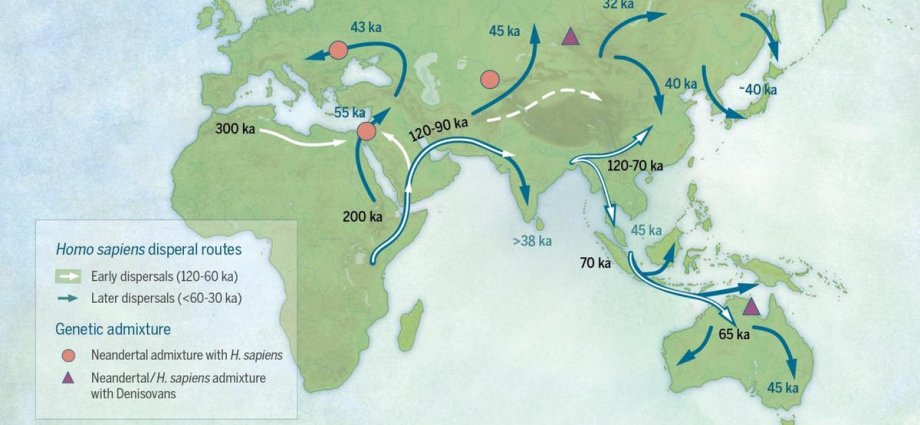Scientists have discovered the role played by a gene in early humans adapting to colder climates, offering them a survival advantage when they moved out of Africa.
Modern humans migrated out of Africa around 70,000 years ago, and almost all people currently living outside the continent are thought to have descended from those early pioneers.
Since Africa protected human ancestors from the extreme cold conditions of past ice ages, they lost their thick body hair and adapted to the continent’s heat.
But as humans migrated to colder regions, they went from being hunter gatherers to forming agricultural and pastoral societies. The changes compelled them to adapt and played a pivotal role in shaping human evolution and diversity.
It remained unclear, however, exactly how the early humans who migrated from Africa kept their bodies warm when they moved to extremely cold climates.
Studies over the past two decades suggested that DNA variations within the fat mass and obesity-associated gene FTO were linked to the reduced heat-generating capacity of a set of human fat cells.
Mice without these gene alterations – called type C variants – appeared to show enhanced heat production in their brown fat tissue and some resistance to high-fat diet-induced obesity.
Scientists speculated that such variants could be related to the adaptation of mammals such as humans to cold environments.
In the latest study, researchers analysed the frequency of the gene variant among diverse human ancestral groups and found a “remarked” inverse correlation between the C variant’s frequency and mean earth skin temperatures in January.
This indicated that “the colder the location, the higher the frequency of this variant”.
The shift in the C variant’s frequency in early human populations tracked the “modern human migration route map,” scientists said.
A substantial change in the C variant’s frequency as populations moved from Africa to Eurasia could have been driven by humans being forced to adapt to varying levels of cold stress, they said.
Humans with this gene variation could have had enhanced body heat generation in cold climates, giving them a substantial survival advantage.
This could be one of the many gene variations that helped early humans adapt to cold environments, scientists said, adding that further studies on this trajectory of human evolution were needed.
“Much like the rock paintings adorning the walls of the Blombos Cave, our DNA serves as a faithful recorder of every notable event along the intricate path of human evolution,” scientists said.











